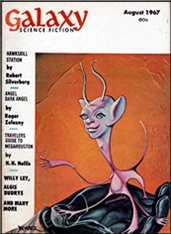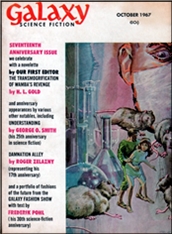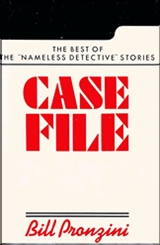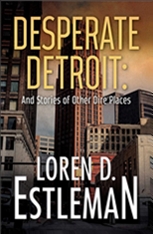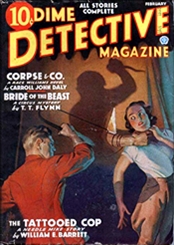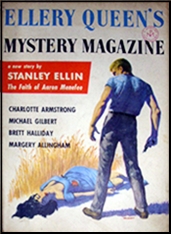SELECTED BY MIKE TOONEY:
A(UGUSTUS) BOYD CORRELL, according to FictionMags, was “born in South Carolina; Newspaperman, writer for Walt Disney, author of magazine short stories; died in Los Angeles.” In 1948 he co-authored a novel, The Dark Wheel (a.k.a. Sweet and Deadly), with Philip MacDonald.
Correll specialized in short crime fiction, however, with his over two dozen stories being placed in the major detective pulps of the ’40s and ’50s; in the ’60s he generated two episodes for Robert Taylor’s Detectives TV series, and the ISFDb credits him with three works of SFF (Science Fiction-Fantasy). Although we’re sure more of his stories are lurking out there somewhere on the Internet, for the moment we can locate only two of them, both of which are, not surprisingly, movie-related.
(1) “The Corpse That Played Dead” (Thrilling Mystery, Winter 1943) Online here.
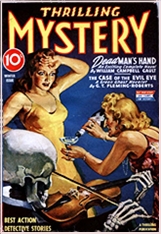
Film actor Ronald Edwards’s movies always lose money, so why does Panamint Studios boss Emil Friml keep making films with Edwards in them? For Friml, the main concern is that somebody is trying to kill Edwards while he’s making a war movie, falling sandbags and flame-throwers blasting real flames at his leading man. This is enough for Friml to call in the studio’s unofficial detective, Jimmy Lee, our first-person narrator. In spite of Lee’s presence right there on the sound stage, though, someone succeeds in doing Edwards in just as they’re filming a battle scene on a bridge:
“I jumped up from the pile of scenery and started for the prop bridge, with Jane and her brother close behind. I leaned over the actor. A dark red worm of blood was jerking and twisting from his temple, and his throat moved convulsively. He sighed and gurgled. Then the blood stopped jumping, and merely seeped as though no more was left in his body. . .
“As I started for the door, the background lights, casting their eerie glow of red, suddenly blinked out. The stage was in total darkness. I let out a yelp of surprise and was smacked flat as someone rushed past me. Jane screamed — a long, piercing cry that echoed and reechoed through the building.
“I heard a thumping as I pushed to my feet and held my hands out to avoid another collision. There was a swishing, grating noise as though a body were being dragged across the floor, then a bump — and silence. . .
“I started, when I glanced at the spot where the corpse had been. The body was gone.”
Lee doesn’t realize it at the time, but the apparently pointless act of the body being dragged across the floor is the key that will unlock how — and who — murdered failed matinee idol Ronald Edwards.
Here’s a nice bit of descriptive writing that also serves to delineate the character of the studio boss:
“One moment he wasn’t there, and the next he was. In the ghostly light of the background flares, he looked like Scrooge and the devil rolled into one. His withered leg swung like a pendulum between his good one and the mahogany crutch which supported him. His head, a tremendous load for such a scrawny neck, was covered with a fuzz of colorless hair. His ears were pointed and belonged on a character from a child’s fairy story book. I had seen him often, but I was always startled when I faced him.”
(2) “Death on Location” (Mammoth Mystery, January 1946). Online here.
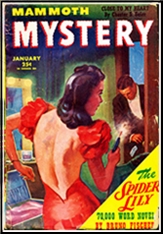
“It seemed to be a very good location for filming a horror movie. In fact it was so good the most horrible of all creatures kept everybody’s nerves on edge and finally ran off with the heroine.”
Tom Ferguson’s normal occupation is scouting for movie locations, but when he embarked on this particular expedition he never anticipated finding an old woman with her throat torn out — or getting attacked by a swamp monster that walks on two legs (a “gibbering thing that smelled of putrefied flesh”), a creature straight out of a nightmare that, oddly, seems a mite too protective, not of its territory per se, but of some small shiny, round things that your average monster wouldn’t think twice about, but which would definitely excite human interest, enough human interest to lead to murder . . .
